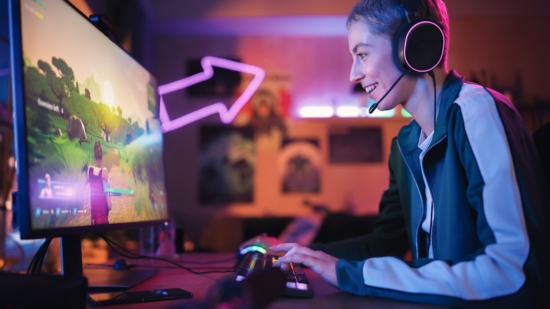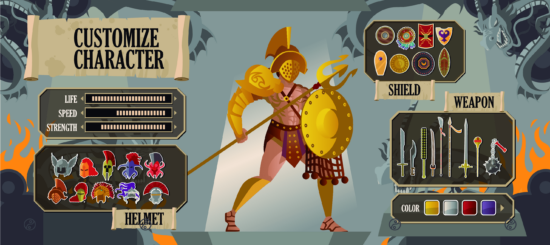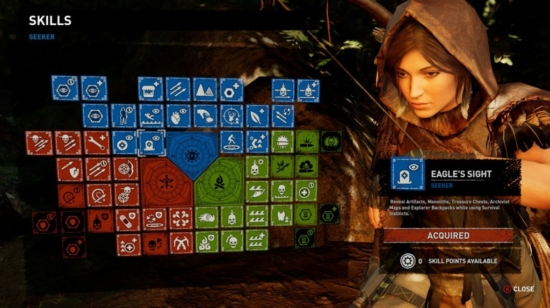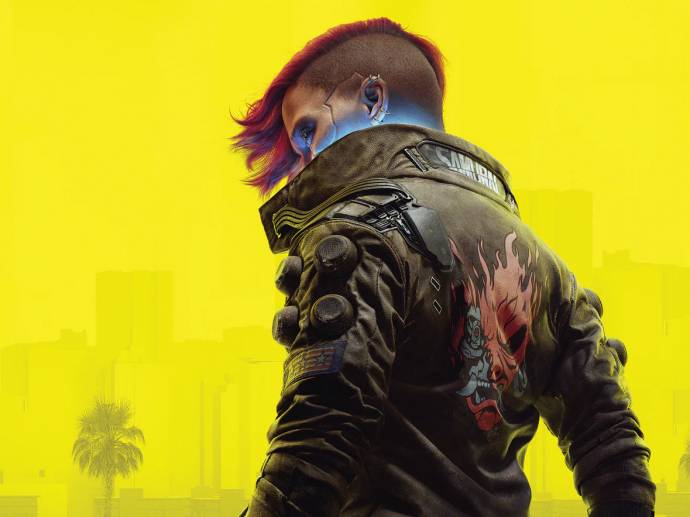My Character as a Mirror: Similarity Identification in Video Games
- February 28, 2024
- Marcelina Król
- What Lies at the Heart of Character Similarity Identification in Video Games?
- Why Does It Matter?
- How Can Character Similarity Identification Knowledge Be Applied to a Video Game?
- Which Video Games Excelled at Character Similarity Identification?
- Let’s Not Forget About the Players’ Characteristics
- Takeaways

How to create characters that are memorable to players? In this episode, we will explore the importance of a player’s psychological identification with video game characters, which is rooted in similarity. We will also discuss the “mirror hypothesis” and explain how it plays a crucial role in shaping a player’s evaluation and emotional attachment to a character.
In the introduction to this series of articles, we discussed the most recognizable, liked, and disliked game characters. The intensity of psychological identification with a given character played a significant role in their evaluation from the players’ perspective. Most likely, it also had some bearing on their memorability.
Psychological identification that stems from similarity is the process of associating the self closely with other individuals, their characteristics, or views.
It plays a key role in determining the likability of your character. Identification helps understand the subsequent psychological mechanisms that drive players’ preferences and decisions.
What Lies at the Heart of Character Similarity Identification in Video Games?
Video games surpass other forms of media in their ability to foster character identification. Books and movies enable audiences to observe heroes from an outsider’s viewpoint or perhaps enjoy their lives vicariously. Games, on the other hand, represent the first medium that actively empowers players to control characters’ actions, choose attributes, and pursue goals. The distinction between the player and their character frequently blurs as players recognize aspects of themselves in the protagonist.
When the character ceases to exist as a separate entity and becomes an embodiment of the player’s identity, a deep sense of care arises — you become them, and they become you.
Players perceive aspects of the character as extensions of themselves, and it becomes a symbolic representation of the player’s identity within the game world. Consequently, players can experience genuine emotional responses derived from the actions performed by their avatars or directed towards them. Young players, in particular, tend to perceive minimal or no distance from their game characters and identify easily with them.
In the realm of gaming, all players tend to lean naturally towards crafting characters whose personalities mirror their own. It is rooted among others in a desire for self-consistency, as diverging too far from their inherent traits can challenge the player’s self-concept. According to the mirror hypothesis, players establish a sense of coherence in their identity by aligning in-game personas with their characteristics, fostering a more seamless and resonant connection with their virtual avatars.

Moreover, this effect stems from the affinity bias as individuals naturally tend to gravitate towards people they share similarities with. Notably, a parallel tendency exists to distance oneself from those who differ.
Recognizing this, it becomes crucial to ensure the likability of characters through identification to resonate effectively with players.
Why Does It Matter?
Player Benefits of Character Similarity Identification: Satisfaction, In-Game Time, and Community Perception
Enhanced Enjoyment
The identification process with the character is closely intertwined with the engagement with and enjoyment of the video game.
When players identify with the characters they control, it creates a powerful emotional connection that enhances their overall gaming experience. This identification contributes to a sense of agency and personal investment. The player’s journey within the game becomes more meaningful and immersive.
The emotional resonance that comes with identification deepens the player’s connection to the virtual world and influences their perception of challenges and achievements within the game narrative.
Ultimately, identification influences the overall enjoyment and satisfaction of playing the game.
Increased In-Game Time
Research has validated that as the player’s connection with the virtual character strengthens, the time spent in the gaming world increases. It’s a natural progression–as the bond deepens between the player and their digital alter ego, the desire to extend the in-game experience grows. When players develop a strong connection with their character, it transcends mere gameplay; it becomes a personal investment.

Enhanced Perception of the Game’s Community
Identifying with the game character creates a sense of attachment, but it goes a step further. This attachment, in a fascinating chain of events, positively influences the perception of the game community. Players tend to have a higher sense of trust in the honesty, care, goodwill, and cooperative intentions of fellow players in the game community. This trust plays a pivotal role in shaping the intention to persist in playing the game, influencing gamers to spend more time in-game.
Drive to Play
Identification with the game character also actively predicts various playing motivations. This includes the thrill of a challenge, the curiosity about game content or themes, the desire to escape from daily life concerns, and the inclination for social interaction.
It’s not just about playing the game; it’s about what drives and motivates the player, creating a more dynamic and engaging gaming experience.
But it works the other way around, too–the more time invested in the virtual realm, the deeper the identification with the in-game character. The experiences, challenges, and victories become shared history as gameplay unfolds, creating a deeper bond between the player and their digital counterpart. It’s a straightforward connection–the longer you play, the more you identify with the character you control. This creates sort of a loop in video games, where identification fuels prolonged gameplay, and extended gameplay, in turn, deepens the sense of character identification.
Developer Benefits of Character Similarity Identification: Loyalty, In-Game Purchase
Identification not only impacts players’ enjoyment, leading to increased time spent in the game or brand loyalty, but it also directly contributes to measurable profits for game developers. Research has demonstrated that the identification process heightens players’ intention to purchase in-game items. These acquisitions boost players’ competitiveness and foster a willingness to enhance their characters’ appearance. However, the influence doesn’t end there; it operates in a continuous loop. To further strengthen identification, developers can introduce more items available for purchase. The variety of gaming item options allows players to strengthen their individuality and uniqueness in the gaming realm and taps into the human desire to stand out and feel special. And that, in turn, reinforces the psychological identification with a customized character!

Familiarity and identification with the in-game character deepen immersion in the game and transform the player’s experience.
The longer a player engages in gameplay, the more they sense that they’re not merely playing a game–they’re living it. And what game developer wouldn’t aspire to achieve that level of player engagement? It strengthens immersion and positively relates to the experience of flow, which translates into loyalty to games.
How Can Character Similarity Identification Knowledge Be Applied to a Video Game?
Allow Customization
Several factors influence the identification with the playable character, and one significant contributor is well-implemented customization. This feature aids players in immersing themselves in the character’s mindset, thereby facilitating the identification process. The visual aspects, names, and abilities of player characters serve as means of articulating players’ identities. This, in turn, fosters opportunities for an extended sense of self. Given the importance individuals attribute to their appearance, players attach significant value to their visual representation of their in-game characters, considering them extensions of themselves.
The identification is enhanced when players can see a physical resemblance to their characters in body shape, race, age, and facial features.
Research revealed a particular emphasis on the characters’ hairstyles, hair colors, and eye colors among players. Customizing a game character allows one to create a character similar to the actual self of the player (as well as the ideal self–you can read more about that here).
However, frequent changes in clothes are not to be desired, as they lower the level of identification. This seems interesting as it contrasts the common practice of regularly changing clothes in real-life scenarios. The discrepancy could be attributed to the dynamics of player-avatar relationships. Players might view their characters as dress-up dolls rather than extensions of themselves.

Make the Characters Feel Human
Another significant factor that impacts the identification with a game character is the degree of similarity to a real human being. The identification process is enhanced when players perceive the character as possessing qualities akin to those of a natural person. The more the character is perceived as a genuine individual with relatable characteristics, the stronger the sense of connection and identification for the player. It stems from the psychological principles of empathy and relatability.
Players find it easier to connect with characters displaying traits similar to those of real-life individuals.
This connection is further strengthened through the player’s ability to project their feelings and experiences onto characters (you can read more about that in the next episode covering projection in our Psychology Behind Crafting Memorable Video Game Characters series).
Craft Likable and Appealing Characters
As mentioned earlier, the in-game character should exude a relatable human. However, it goes beyond mere humanity. The character should be someone likable, someone we’d willingly spend time within the real world. A sense of fondness for the character is vital to deepening player identification. If it’s not psychologically appealing, the desire for identification diminishes. Additionally, it’s not solely about personality traits.
Studies indicate that players tend to identify more with physically attractive characters.
Such avatars align with societal beauty standards, carry positive associations with traits like health and intelligence, and provide aesthetic enjoyment. These factors collectively enhance the overall appeal and immersive experience for players.
Know Your Audience
As the mirror hypothesis and the affinity bias state, we gravitate towards in-game characters that reflect our characteristics. Research has shown that players have a greater tendency to identify with characters of the same gender and with similar characteristics as themselves.
When the character’s point of view and attitude mirrors the player’s, it enables players to see themselves reflected in the narrative.
Consequently, understanding the audience becomes paramount when designing a video game character to resonate with a specific target group. By grasping the target audience’s demographics, preferences, and traits, developers can craft characters that align closely with the players’ self-perception. In turn, this can enhance the overall gaming experience. Many of them and publishers conduct professional market research, encompassing qualitative and quantitative methodologies to achieve this.
Foster a Sense of Competence
How players perceive their gaming abilities, particularly their skill level, could be critical in identifying with the in-game character. Feeling competent during gameplay positively influences the level of identifying with players’ virtual alter egos. The prowess of the in-game character constitutes a crucial element that should not be overlooked.
Individuals derive satisfaction from experiencing power, even within the virtual realm.

To enhance player identification, the player must perceive their in-game persona as possessing desirable attributes. It goes beyond that; the identification with the game character anticipates players’ perceived game power and influences how they thought they performed in the game. This suggests a process where satisfied players, attributing their success to certain character features, identify with those traits and continue playing, gradually improving their skills (you can read more about player’s agency in another post that’s a part of The Psychology Behind Crafting Memorable Video Game Characters series).
Which Video Games Excelled at Character Similarity Identification?
In September 2023, we launched the “Gaming Sense™ 2023: Characters” study and asked more than a hundred mid-core and hard-core gamers from our playtester base to gauge their preferences for game characters. Among the questions we posed, one tested the extent of players’ identification with in-game characters: “To what degree do the traits of these characters mirror your traits in real life?” Ranked by scores from highest to lowest, the three characters most commonly identified with were:
- Max Caulfield (Life Is Strange, Dontnod Entertainment)
- Geralt of Rivia (The Witcher series, CD Project Red)
Let’s examine them in closer detail.
V (Cyberpunk 2077)
The case study of well-prepared “containers” for gamer identification opens with the purposively underspecified character of V (albeit well depicted in marketing stories). This character, or better to say, the character framework, was rated highest on the identification scale. Gamers resonate with V in Cyberpunk 2077 not just as a character but as an extension of themselves.

The immersive narrative and customizable features let players mold V’s personality and appearance. This turns the protagonist into a digital alter ego. Players actively shape V’s destiny from the initial character design to in-game choices and tactics.
The game’s narrative, rife with moral quandaries and personal decisions, grants players a sense of agency, forging a deep connection with V’s journey through Night City.
V’s relatable struggles, dreams, and intricate relationships within the cyberpunk realm foster empathy. They build an emotional bridge between players and their virtual characters. This blend of player agency, compelling storyline, and finely crafted character make V not just a game protagonist but a personal investment in the Cyberpunk 2077 universe.
Max Caulfield (Life is Strange)
The second character on the list easily captures players’ empathy, particularly resonating with those who identify as introverts (a prevalent trait among gamers). Max isn’t just a character; she’s a mirror reflecting the raw reality of the player’s struggles and growth.

The game is an emotional rollercoaster exploring themes like friendship, love, and the ripple effects of the player’s choices. This lets a player walk in Max’s shoes.
High school days, friendships, and the journey of self-discovery–we’ve all been there.
Max’s geeky, introverted vibes, choosing observation over participation, resonate with our quirky sides. Internal monologues? It’s like reading our diary. She’s not just a character; she embodies a reflection of the human experience. With vulnerability and the complexities of life as her backdrop, Max emerges as a highly relatable protagonist. This transforms Life Is Strange into more than just a game, evolving into a compelling journey through the diverse narratives of its target players.
Geralt of Rivia (The Witcher series)
Let’s discuss the third character that players identify with the most–the Witcher. This strong connection could result from seasoned gamers who have dedicated substantial time to exploring the universe of The Witcher. The more you play, the more you connect with the character. Alternatively, the seamless blend of imperfection and virtue could keep us engaged.

It makes the Witcher not just a game character but a reflection of the complexities players face in the real world.
Geralt’s quest to understand his identity as a Witcher and his relationships with other characters resonate with many gamers who may also grapple with questions of self-identity.
Geralt faces personal and external challenges throughout the series, such as discrimination, searching for love and belonging, and trying to find his place in the world. These struggles are relatable to many gamers. Moreover, the game’s narrative allows for player choices. This enables individuals to shape Geralt’s personality and make decisions that align with their values. Geralt’s journey involves deep and meaningful relationships with other characters, adding emotional depth to the narrative.
Let’s Not Forget About the Players’ Characteristics
Although game developers may not prioritize it, psychologists find examining individual traits that enhance or lessen identification is crucial. Being open to new experiences has been found to positively predict the strength of identification, while extraversion shows a negative correlation. Low self-esteem is associated with lower character identification, and high character attachment correlates with less playing time for those with lower self-esteem. Depression and lack of social skills also play a role. Individuals with depression are more likely to identify with video game characters, while solid social skills can reduce identification.
Takeaways
- Player identification with video game characters drives in-game purchases.
- The emotional connection encourages players to invest in customization options and virtual goods that resonate with their virtual personas.
- Effective game design to enhance player identification involves several key actions. Firstly, allowing customization is crucial. Players value the ability to create characters resembling themselves in body shape, race, age, and facial features. Secondly, making characters feel human by imbuing them with relatable qualities strengthens player identification.
- Likability is vital here, extending beyond personality traits to encompass physical attractiveness, aligning with societal standards.
- Understanding the audience is pivotal; characters reflecting players’ characteristics, gender, and attitudes foster more robust connections.
- Lastly, promoting a sense of competence positively influences character identification and encourages sustained gameplay.
These insights are part of an ongoing series exploring the psychology behind crafting memorable video game characters. Join us for more psychology knowledge that shapes our interactive adventures and could make your game stand out. Subscribe to our mailing list here. This comprehensive exploration discusses the nuanced concepts of projection, wishful identification, self-esteem, empathy, and the pivotal notion of a player’s agency. Whether a seasoned gamer or new to the digital realm, this series provides insight into the intricate psychology behind gaming experiences. It transcends the pixels on the screen, comprehensively exploring the subject.
Follow us for more! The next parts are coming soon.
*
Want to cite this article? Do it elegantly: Król, M., & Dębek, M. (2024, February 28). My Character as a Mirror: Similarity Identification in Video Games. tryevidence.com. https://tryevidence.com/blog/my-character-as-a-mirror-similarity-identification-in-video-games/






